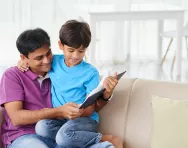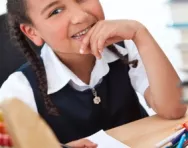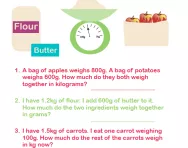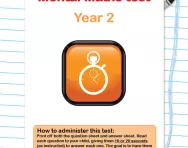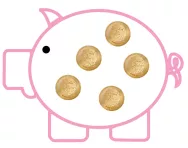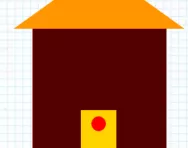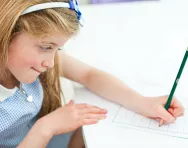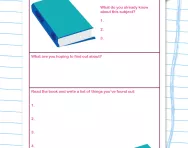Important update from TheSchoolRun
For the past 13 years, TheSchoolRun has been run by a small team of mums working from home, dedicated to providing quality educational resources to primary school parents. Unfortunately, rising supplier costs and falling revenue have made it impossible for us to continue operating, and we’ve had to make the difficult decision to close. The good news: We’ve arranged for another educational provider to take over many of our resources. These will be hosted on a new portal, where the content will be updated and expanded to support your child’s learning.
What this means for subscribers:
- Your subscription is still active, and for now, you can keep using the website as normal — just log in with your usual details to access all our articles and resources*.
- In a few months, all resources will move to the new portal. You’ll continue to have access there until your subscription ends. We’ll send you full details nearer the time.
- As a thank you for your support, we’ll also be sending you 16 primary school eBooks (worth £108.84) to download and keep.
A few changes to be aware of:
- The Learning Journey weekly email has ended, but your child’s plan will still be updated on your dashboard each Monday. Just log in to see the recommended worksheets.
- The 11+ weekly emails have now ended. We sent you all the remaining emails in the series at the end of March — please check your inbox (and spam folder) if you haven’t seen them. You can also follow the full programme here: 11+ Learning Journey.
If you have any questions, please contact us at [email protected]. Thank you for being part of our journey it’s been a privilege to support your family’s learning.
*If you need to reset your password, it will still work as usual. Please check your spam folder if the reset email doesn’t appear in your inbox.
7 key ways to support your Year 2 child's learning
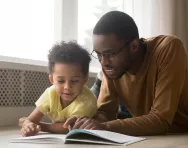
These are seven of the key areas covered in Year 2, and some strategies for how you can support your child's learning at home. If you can help your child understand these topics, they’ll be in a really strong position for smashing the final year of KS1.
Year 2 English key area: words and vocabulary
In Year 2 children are expected to extend their vocabulary, adding to the lists of words they recognise in their reading, and use in their writing.
A great way to do this is through stories. Whilst reading, stop and discuss interesting words and their meaning. Model writing down a word, and writing its definition, and ask your child to do the same with some words they find interesting.
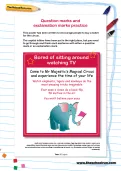
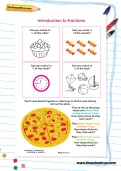
Start the Year 2 Learning Programme!
- Weekly maths & English worksheets direct to your inbox
- Follows the National Curriculum
- Keeps your child's learning on track
Encourage your child to be passionate about words – have them write a list of their favourite words and discuss what they like about them, and write a list of your own, too. There are loads of vocabulary-building activities to try together, as well as vocabulary apps for primary school children.
Year 2 English key area: writing non-fiction
Throughout primary education, children learn to write for a variety of purposes, and non-fiction writing is a key skill.
A great non-fiction practice activity to do at home is recipe writing. Cook together (it doesn't have to be baking – why not teach them some dinner dishes instead?), then ask your child to write down the recipe and step-by-step instructions. Encourage them to be as accurate as possible, pointing out that in non-fiction writing, it’s all about the facts and the details.
Always encourage them to read back their writing, checking for accuracy and any mistakes.
If you don’t fancy actually cooking (and we really don’t blame you!) have them write up a fake recipe (e.g. for slime, or a witches' brew), or something you’ve cooked together before.
Year 2 English key area: handwriting
Improving year-on-year with handwriting is essential. In Year 2, children are expected to form letters with greater consistency, with both lower-case and capital letters and numbers, too.
TheSchoolRun has lots of handwriting worksheets to get you started, as well as a complete, step-by-step workbook to help practise writing each letter of the alphabet.
As children go into Key Stage 2 they’ll be expected to join their letters together, otherwise known as cursive handwriting (some schools teach this right from Reception), so you can start helping your child practise at home.
We have lots of expert advice about how children learn to write and how you can support them at home, as well as handwriting videos produced in association with the National Handwriting Association.
Year 2 maths key area: maths story problems
Using number skills to solve problems in ‘real life’ is a key focus in Year 2, and it’s a really easy skill for children to practise with you at home. Schools refer to 'real life' problems as story or word problems.
Start by writing out some problems to work through together, for example:
Tom had 12 toy cars, then bought 14 more. How many toy cars does Tom have altogether now?
Depending on your child’s ability, use larger numbers if appropriate. By the end of Year 2, the aim is for children to be able to add and subtract numbers up to 100.
Show them how to underline the important and relevant parts of the word problem, and point out that some details can be ignored.
For example, in the problem above, underline: 12, 14, and the word ‘altogether’ (as this word usually suggests addition). Ask them to then write out the calculation as a number sentence (i.e. 12 +14 = ) then rewrite it to make it easier by putting the largest number first (always something we teach for addition success), so 14 + 12 =.
Once you’ve practised on some questions you’ve written, have them write their own story problems, too – they can make them as silly as they like! TheSchoolRun also has a large library of pre-prepared story / word problems if you'd like some ready-made options.
Year 2 maths key area: money, money, money!
Money is the perfect tool for your maths teaching at home, as it’s a tangible, real-life resource that you’re likely to already have (here's hoping, anyway...).
One focus in Year 2 is for children to learn how to make one amount in various ways. For this you’ll need a small purse (or a few if you have them) and some coins.
Ask your child to make amounts in at least two different ways using coins and put them in the purse(s). You can make it harder by adding rules, for instance “use only silver coins to make 30p in two different ways.”
My key advice for money maths is for children to use cash as much as possible in real life, for example at local shops, school fairs and so on. You could also set up shop at home: most children love role play, so spend a morning establishing a pretend shop with them and then play at selling and buying, taking it in turns to be the shopkeeper and the customer.
Year 2 maths key area: mental maths
Children in Year 2 are encouraged to develop faster skills when it comes to mental calculations and other number knowledge. For instance, they should learn to: recognise odd and even numbers, add and subtract 10 and multiples of 10 (for example, 3 + 10, 24 - 20) and multiply by 2, 5, and 10 "in their heads".
TheSchoolRun has loads of mental maths resources to use, including pre-prepared mental maths tests and checks.
Every day, try to fit in a five-minute mental maths burst. You can incorporate mental maths work into other maths homework tasks, too – for example, if you're working on addition word problems, ask your child to solve a similar word problem to ones you’ve practised in their head (just keep the numbers smaller and the calculations simpler).
Year 2 maths key area: understanding the properties of shapes
The national curriculum suggests that Year 2 pupils should handle and name a wide variety of common 2D and 3D shapes, including quadrilaterals and polygons and cuboids, prisms and cones.
They also need to learn to identify the properties of each 2D and 3D shape (number of sides, number of faces, number of corners), compare and sort shapes on the basis of their properties, and use space and shapes vocabulary (such as sides, edges, vertices and faces) precisely.
To support them at home, ask your child to draw, with a ruler, all the 2D shapes they know. Using our shape and shapes resources, assess what others they know too and how clearly they can describe them.
Then – the fun bit – go on a shape walk. Search around the house for shapes, noting them down as they go. Teaching children to recognise shapes in their environment can add an element of motivation to understanding them.
If they're ready to move on to 3D shapes, download some nets of shapes and get making!
